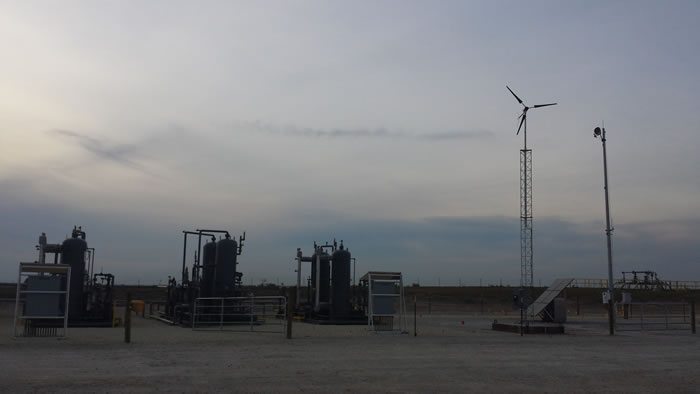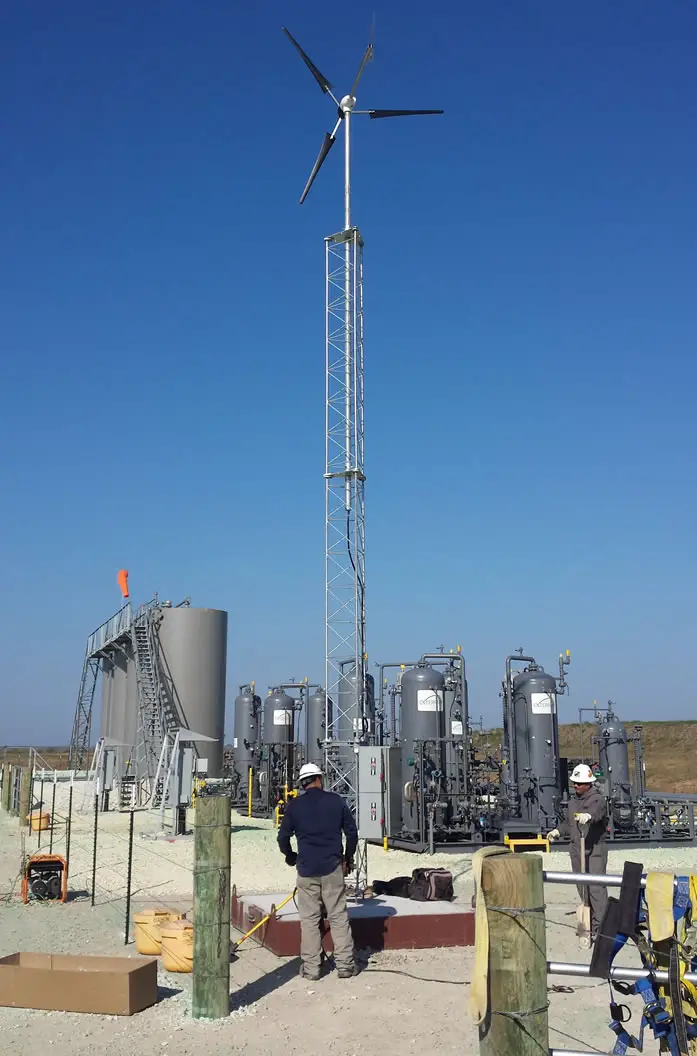The issue faced by this oil company is that many of their wellheads are in remote areas not served by electrical utilities. The typical well head has a small data collection and control system which uses an average of about 3 to 4 amps 24 hours a day. In these cases, the oil company is faced with using well head natural gas to run a backup generator or to use Renewable Energy to provide for the relatively small energy requirement. Also, since the loads are DC and not AC, a battery based solar solution is a natural fit.
Since the energy requirement is relatively small, running even a small 10kw to 20kw Natural Gas generator 24 hours a day 7 days a week is not cost effective. Even a small 10kw generator will deliver up to 40 amps of continuous current at sea level which is up to 10 times the load requirement. Additionally, long term maintenance of a generator is much more costly than a battery based solar and/or wind solution.
Because of the fact that a solar and battery based solution is a great match for this type of load requirement, many oil companies use solar panels coupled with a battery bank to meet their data collection and control needs at the well head.

Typical solar skids are portable, have approximately 1000 watts or so of solar panels, and a battery bank of about 780 to 1200 AH. For example, a 6 amp load will require about 144 AH in a 24 hour period. A typical autonomy figure might be 5 to 8 days which would require approximately 3 strings of 4 each L16 batteries wired for 24vdc (12 batteries).
Since well head solar skids located close to the coast have issues with production due to marine cloud layers, The company was asked to provide a wind turbine and a smart charger system which would monitor two separate battery banks and direct turbine charging to the battery bank which needed the charging the most. They developed a PLC based solution which uses a simple DC voltage monitoring circuit and a pair of solid state relays to determine the state of charge of two separate battery banks and connects the turbine charge controller output to the battery bank which needs it the most. The system can be used to help charge solar battery skids, and with software flexibility, can be tailored to any requirement.

After looking at the loads, the size of the solar arrays, and the size of the existing battery banks, MacDonald Solar and Wind Inc. selected the Whisper 200 wind turbine manufactured by Luminous Renewables as the turbine for this application. It provides significant energy when compared with the solar infrastructure already in place, works well in the wind resource present in the area, and is sturdy and reliable. The company coupled this turbine with MidniteSolar’s Classic 150 and Clipper unit due to its outstanding MPPT harvest, custom wind curve programming, and high wind turbine protection.
For the application itself, they wanted to have a portable wind turbine tower. To accomplish this, they designed a concrete wind turbine skid which can be forklifted in place. Additionally, a self standing lattice tower was specified so that the tower would not need guy wires. Finally, the tower has a hinge plate so that the turbine can be laid down for servicing and repairs.
The system is now in operation at three well head sites, and has shown itself to be a good performer. The Whisper 200 can produce up to 5 kwh a day at sites with good wind, is very rugged, and requires little maintenance. Wind site conditions need to be appropriate to the need; something that it necessary at any wind site to insure good performance.
www.mcdonaldsolarandwind.com

